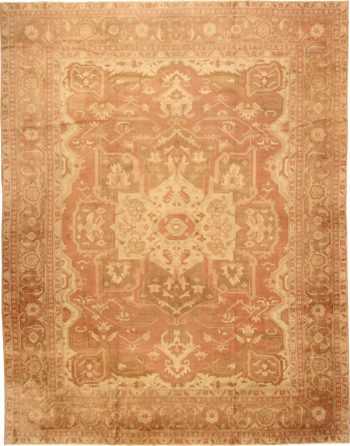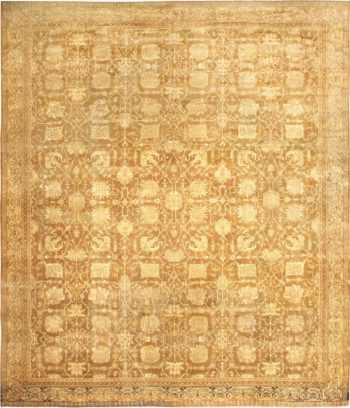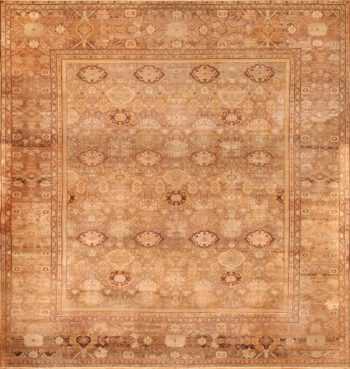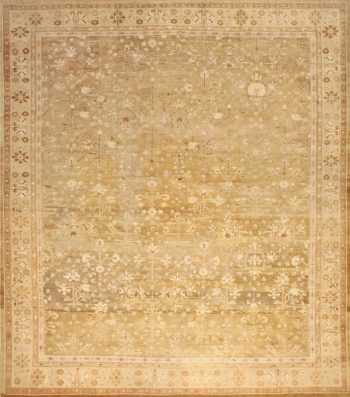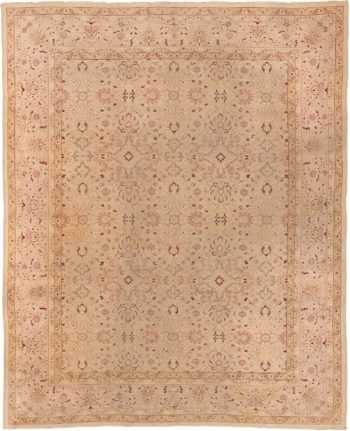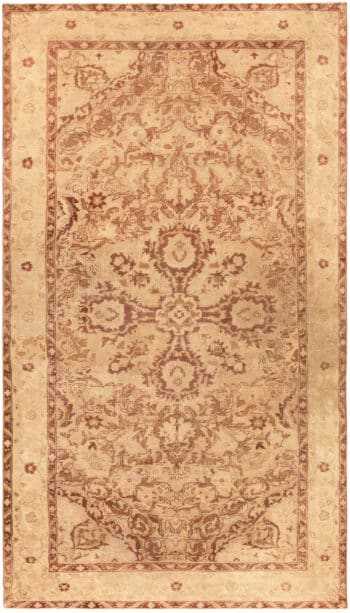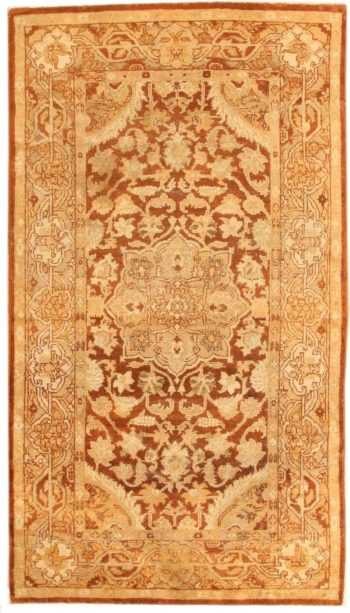Amritsar Rugs & Carpet Collection From India
Revel In Refined Style: Explore Our Regal Amritsar Rug Collection
View our current selection of antique Indian Amritsar rugs below
Beautifully Decorative Allover Design Oversized Antique Indian Amritsar Rug 49538
Size: 12 ft 10 in x 22 ft 6 in (3.91 m x 6.86 m)Antique Indian Amritsar Hallway Runner Rug 41971
$14,500.00Size: 2 ft 4 in x 22 ft 5 in (0.71 m x 6.83 m)Warm Floral Large Antique Decorative Indian Amritsar Area Rug 70304
Size: 11 ft 9 in x 19 ft 4 in (3.58 m x 5.89 m)Large Persian Heriz Design Antique Indian Amritsar Rug 41047
Size: 14 ft 5 in x 18 ft 8 in (4.39 m x 5.69 m)Large Antique Vase Design Indian Amritsar Rug 50341
$44,000.00Size: 14 ft 8 in x 17 ft 5 in (4.47 m x 5.31 m)Large Decorative Earth Tone Antique Amritsar Indian Rug 50721
$56,000.00Size: 15 ft 8 in x 17 ft 4 in (4.78 m x 5.28 m)Beautiful Large Soft Neutral Pastel Antique Decorative Indian Amritsar Rug 50658
$48,000.00Size: 13 ft 7 in x 17 ft (4.14 m x 5.18 m)Rare Moss Green Antique Indian Amritsar Rug 50378
$68,000.00Size: 15 ft x 17 ft (4.57 m x 5.18 m)Beautiful All Over Design Fine Antique Decorative Indian Amritsar Rug 50455
$36,000.00Size: 12 ft 6 in x 14 ft 10 in (3.81 m x 4.52 m)Soft Patel Color Antique Allover Design Indian Amritsar Area Rug 70391
Size: 11 ft x 14 ft (3.35 m x 4.27 m)Antique Indian Amritsar Area Rug 71748
$3,600.00Size: 4 ft x 7 ft 6 in (1.22 m x 2.29 m)Small Decorative Antique Indian Amritsar Rug 40707
Size: 4 ft x 7 ft 2 in (1.22 m x 2.18 m)
Learn More About Decorative Antique Amritsar Rugs from India
Antique Amritsar Rugs – The spectacular rugs of Amritsar capture the exotic style of India while incorporating a subtle colonial influence. This convergence of eastern and western styles results in an exceptionally alluring appearance that has been beloved by western consumers historically and today. The outstanding old Amritsar carpets were created by influential exporters to fuel the demand for exotic rugs and textiles following Queen Victoria’s 1851 Great Exhibition in the Crystal Palace. Elegant curvilinear botanical motifs and superior materials have made Amritsar carpets particularly desirable and easy to appreciate.
Amritsar carpets are extremely distinctive within the production of Indian carpets. Unlike the Agra Rugs, those produced in Amritsar, in the far north of India near Kashmir, do not represent a continuous production back to Mughal times. They seem to have resulted from a new nineteenth-century initiative under British rule. As such the Amritsar rug weavers were free to approach carpet design more on the basis of western needs than on their own traditions, so their carpets were from the outset well adapted to western decorative use. While their designs responded to contemporary Persian production, Amritsar rugs were generally made with a softer earthier palette, often with a tendency to burgundy or aubergine tones. To this day, they remain a superior decorative rugs by virtue of their flexible formal repertoire and coloration.
Amritsar is located in northwest India. Carpet production began in the late 19th and early 20th centuries during the rise of the British supremacy. Due to Western influence and European demand, the weavers were very prolific during this period. Designs appealed to Western tastes employing large-scale patterns featuring millefleur (thousands of flowers) motifs. A subtle color palate of light blues, yellow, teal and rust characterize these Indian rugs. Amritsar rugs often have cotton foundations, are double weft and use an asymmetrical knot. Very good quality wool is used resulting in a luxurious feel.
The popularity and influence of Amritsar rugs can be traced back to the British Empire’s Colonial rule in India. For the first time, in 1851, at the Great Exhibition in the Crystal Palace, Queen Victoria exposed the world, including laypeople, to the exotic look and feel of the Orient, and began the Western world’s love affair with purchasing “exotic” home furnishings.
The craftspeople of Northern India were quick to capitalize on this trend, making sure they could meet the demand for Amritsar rugs from wealthy people, especially in London, who considered it a status symbol to have beautiful, handcrafted Oriental rugs throughout their opulent homes.
Amritsar rugs were also a point of national pride for the English. For example, every time a Londoner displayed an Amritsar rug in his home, it was a reminder of the tremendous power and scope of the British Empire. National pride, in conjunction with all of the wealth that began pouring into the United Kingdom because from the sale of Oriental goods, were the main drivers in creating a large, highly-profitable market for Oriental artwork, in general.
Collectors in London, the United States, Canada, and other Western markets, were especially enamored by the elegant designs on Amritsar rugs, such as curved botanical motifs, and greatly appreciated the superior materials used in manufacturing these works of art. The soft, earthly palette of most Amritsar rugs, which featured burgundy or aubergine tones, complemented their other furnishings, making the rugs even more desirable.
Today, the Western world’s fascination with Oriental pieces of art – including Amritsar rugs – continues. The rugs remain highly desirable for collectors, mainly because of their flexibility to blend in with the color and style of elegant, modern homes throughout the world. Almost 200 years later, the unique styles of rugs that emerged in the nineteenth century in India are still widely regarded by art critics and historians, as some of the best designs ever created within the art and home furnishings industries.
History Of Antique Indian Amritsar Rugs
During the period of Colonial rule over India, Amritsar rugs began to reflect Western influences in their design. The craftspeople of Northern India took their chance to profit from the ever-increasing demand for exotic carpets by Queen Victoria. It was after the Great Exhibition in 1851 in the Queen’s Crystal Palace that the wonders of the Oriental lands were brought to the world’s attention.
London took easily to the wildly different and exotic, yet oddly familiar patterns that Amritsar rugs offered. Oriental rugs made the United Kingdom even wealthier than before, and the popularity of exotic artwork was on an uptick. Amritsar rugs reflected British influence in India while still retaining elements of surprise and mystery.
Amritsar rugs center on plant-like motifs that swirl and curve into elegant designs. Rugs are made from materials of only the highest quality. Designed with the British, Americans, and Canadians in mind, Amritsar rugs feature a toned-down earthy palette with burgundy hints that don’t overwhelm the eyes. These rugs are far more modest and much less boastful than oriental rugs woven in bright reds and rich purples. This muted look caught the eyes of London collectors and lead to the popularization of the Amritsar rugs.
The popularity of Amritsar rugs is still unceasing. The Western influence on these Indian carpets leaves these rugs under the intense admiration and adoration of art critics and knowledgeable historians to this day. Their reputation lends to their collectability and desirability. Amritsar rugs don’t seem to be exiting the world stage any time soon.
Do people like antique Amritsar rugs from India?
People’s preferences for antique Amritsar rugs from India can vary widely. Some individuals and collectors have a deep appreciation for the historical and cultural significance of these rugs, valuing their intricate designs, craftsmanship, and unique patterns. These rugs often showcase a blend of traditional Indian artistry with influences from Persian and European styles, making them sought after by those who appreciate the fusion of different design traditions.
Antique Amritsar rugs can also hold sentimental value for families and individuals who have inherited or acquired them over generations. They may be cherished as heirlooms or symbols of cultural heritage.
However, it’s important to note that not everyone may be familiar with or have a specific preference for these rugs. Modern interior design trends and personal tastes can play a significant role in shaping people’s opinions about antique rugs. Some individuals might prefer more contemporary or minimalistic designs, while others may have a strong affinity for traditional and antique pieces.
Ultimately, the appreciation for antique Amritsar rugs, like any form of art or craftsmanship, is subjective and can vary from person to person.




